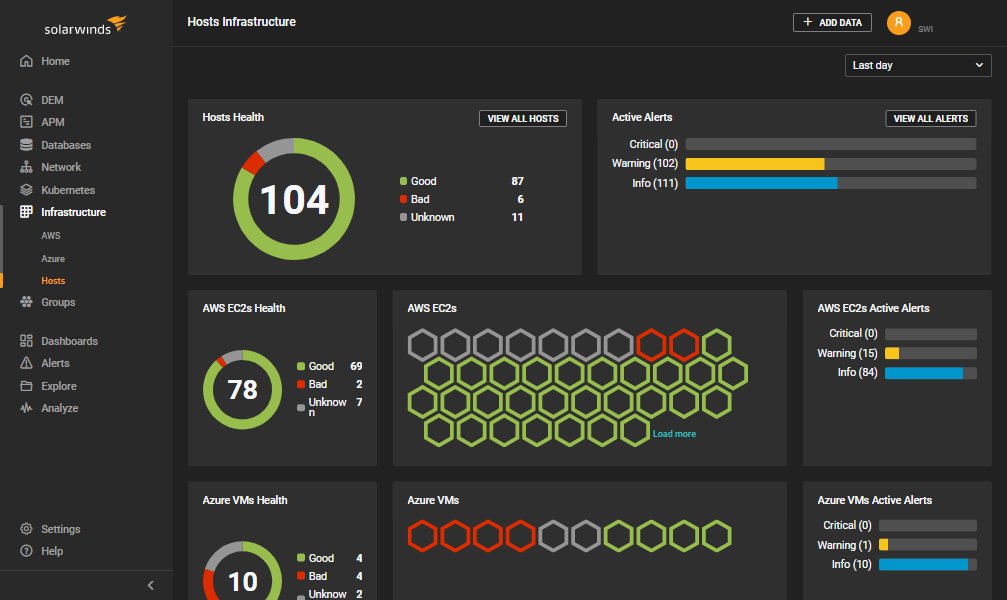Why 100% uptime often ISN’T 100% uptime

 Here’s a little-known fact: Even when your hosting provider says it has provided 100% uptime, that doesn’t necessarily mean that your site hasn’t had any downtime.
Here’s a little-known fact: Even when your hosting provider says it has provided 100% uptime, that doesn’t necessarily mean that your site hasn’t had any downtime.
Why is that? Because many hosting providers calculate their uptime in ways that aren’t intuitive from a customer perspective, ways that sometimes exclude certain downtime.








 Lately there has been a lot of talk about RSS being dead, doomed, dying, a thing of the past, etc, etc, etc. (The latest wave seems to have been triggered by
Lately there has been a lot of talk about RSS being dead, doomed, dying, a thing of the past, etc, etc, etc. (The latest wave seems to have been triggered by  It seems like every month there is some kind of news story about leaked emails. When emails never intended for the public eye are leaked, the consequences can be huge. People have lost their jobs, whole companies have been embarrassed, and in some cases the information revealed can even be dangerous.
It seems like every month there is some kind of news story about leaked emails. When emails never intended for the public eye are leaked, the consequences can be huge. People have lost their jobs, whole companies have been embarrassed, and in some cases the information revealed can even be dangerous. Most single serving websites are very gimmicky, like
Most single serving websites are very gimmicky, like  The Facebook engineering blog often presents interesting findings about the nuts and bolts of Facebook and the technical side of running that enormous service. The latest post is about Facebook’s experimentation on how site speed affects the behavior of its users, called “
The Facebook engineering blog often presents interesting findings about the nuts and bolts of Facebook and the technical side of running that enormous service. The latest post is about Facebook’s experimentation on how site speed affects the behavior of its users, called “
 Software piracy has been around basically since the inception of software, and copy protection methods almost as long, so today’s discussions around DRM really isn’t anything new. All the way back in 1976, a certain Bill Gates
Software piracy has been around basically since the inception of software, and copy protection methods almost as long, so today’s discussions around DRM really isn’t anything new. All the way back in 1976, a certain Bill Gates  We all enjoy taking a late morning and some extra sleep now and then, but usually we want to do it on purpose. A large number of Swedish iPhone owners who use their iPhone as an alarm clock got an unexpectedly late start this morning when it turned out that their iPhone’s clock was running two hours behind.
We all enjoy taking a late morning and some extra sleep now and then, but usually we want to do it on purpose. A large number of Swedish iPhone owners who use their iPhone as an alarm clock got an unexpectedly late start this morning when it turned out that their iPhone’s clock was running two hours behind. How many servers does Google have? Nobody outside Google knows exactly how many servers the company has, but there have been a number of estimates through the years. One of the most quoted ones is
How many servers does Google have? Nobody outside Google knows exactly how many servers the company has, but there have been a number of estimates through the years. One of the most quoted ones is 

 Few have managed to make better use of the Open Source model than Mozilla, and we recently saw
Few have managed to make better use of the Open Source model than Mozilla, and we recently saw  This is what Microsoft’s homepage looked back in 1994 when it was first launched, and its evolution during the following years.
This is what Microsoft’s homepage looked back in 1994 when it was first launched, and its evolution during the following years. The iPod, once Apple’s biggest source of income, has been
The iPod, once Apple’s biggest source of income, has been  The truly great thing about laptops and netbooks is that you’re not bound to your desk. You can bring them with you anywhere. Some people are taking that to the extreme, bringing their laptops with them to places where most of us wouldn’t.
The truly great thing about laptops and netbooks is that you’re not bound to your desk. You can bring them with you anywhere. Some people are taking that to the extreme, bringing their laptops with them to places where most of us wouldn’t. Have you ever wondered what the guy who invented the World Wide Web is up to these days? What about the guys who created Photoshop, or the one who created the PHP scripting language?
Have you ever wondered what the guy who invented the World Wide Web is up to these days? What about the guys who created Photoshop, or the one who created the PHP scripting language?




















